Business
The biggest scams today and how you can protect yourself from them
Published
1 year agoon

Since the COVID-19 pandemic arrived in the United States in the spring of 2020, scams have been on the rise.
As a whole, we’ve spent more time online—working, shopping, and socializing—than we have ever before. With fewer interactions happening face to face, it’s much easier for folks with ill intentions to rob us of our identities, banking information, or money and get away before we’ve even realized what has happened. In fact, in 2021 alone, more than 1 in 3 reported scams were for online purchases, a major increase compared to years prior.
The Better Business Bureau published more than 46,000 scam reports in 2021—about 43% of which led to a monetary loss. Masquerading as trusted brands, potential romantic partners, and even family members, scammers conned a median of $169 out of their targets.
Using data from the BBB Scam Tracker Annual Risk Report, Stacker identified the most common and costly types of scams in 2021. Scams are ranked by the BBB risk index, which factors in a scam’s prevalence, the percentage of reports that lost money to that scam, and the median monetary loss. Since the last time Stacker published this report, two new categories—COVID-19 and cryptocurrency— have been added.
Most scams utilize the internet to rob people of their money, while others prey on your willingness to go to great lengths for those you love. Chillingly, some of the scams on our list, like home improvement scams, are the result of con artists traipsing through your home and potentially spending time around you and other family members.
Read on to find out which scams you might be most likely to fall prey to and to learn some helpful tips that can keep you from ever becoming a victim.
You may also like: 50 car companies that no longer exist
![]()

GaudiLab // Shutterstock
#27. Charity (tie)
– BBB risk index: 0.6
– Share of total scams reported: 0.5%
– Share of scams that reported a monetary loss: 20.0%
– Median reported loss: $100
Charity scams come from an organization claiming to be taking donations to help a specific cause. You donate the money only to find out the charity or cause never really existed or that the charity grossly misrepresented how much of the money was actually going to the cause. These scams can be hard to identify as many scammers go to great lengths to create social media accounts for the charity or cause and even impersonate victims.
In October 2017, a couple created a GoFundMe page for a homeless veteran and concocted a heartwarming, but false story that resulted in more than 14,000 people donating more than $400,000. To keep yourself safe, be sure to vet charities before donating using something like the BBB Wise Giving Alliance.

fizkes // Shutterstock
#27. Tax collection (tie)
– BBB risk index: 0.6
– Share of total scams reported: 0.2%
– Share of scams that reported a monetary loss: 19.1%
– Median reported loss: $236
Tax scams are one of the oldest scams to date and show no signs of slowing down. A fake IRS agent may contact you claiming that you owe taxes to be paid immediately by prepaid debit card or wire transfer with threats of arrest and hefty fines or contacting you with claims that they are sending out refunds but need your personal information to do so.
In one scenario, for which the IRS has already sent several warnings, a scammer will use your Social Security number to file a tax return in your name and then claim the refund. The biggest red flag in this scam is being pressured to act quickly. In actuality, the IRS will give you the chance to ask questions and appeal what you owe while never demanding payment over the phone or requiring that you use a non-refundable form of payment. To avoid this scam, make sure to pay your taxes in full each year and file your return as early as possible.

GaudiLab // Shutterstock
#26. Yellow Pages/directories
– BBB risk index: 0.8
– Share of total scams reported: 0.1%
– Share of scams that reported a monetary loss: 29.4%
– Median reported loss: $550
The Yellow Pages and other similar directories have decreased in popularity since the rise of the internet, but scammers are still benefiting from them. Scammers contact a company claiming to represent a directory and request basic information—address, phone number, email, etc.—before prompting the employee to confirm the listing. Later, the scammed company will receive an invoice for a few hundred dollars, and if they call to complain, the scammer will reply that the employee verbally confirmed placement in their directory and agreed to the cost.
These scams are always done over the phone making them hard to identify. But, easy ways to protect yourself and your company include educating staff and training them to ask suspicious callers questions, researching the company the caller claims to represent, asking specifically about the terms and conditions, and having a clear process in place for inspecting invoices.
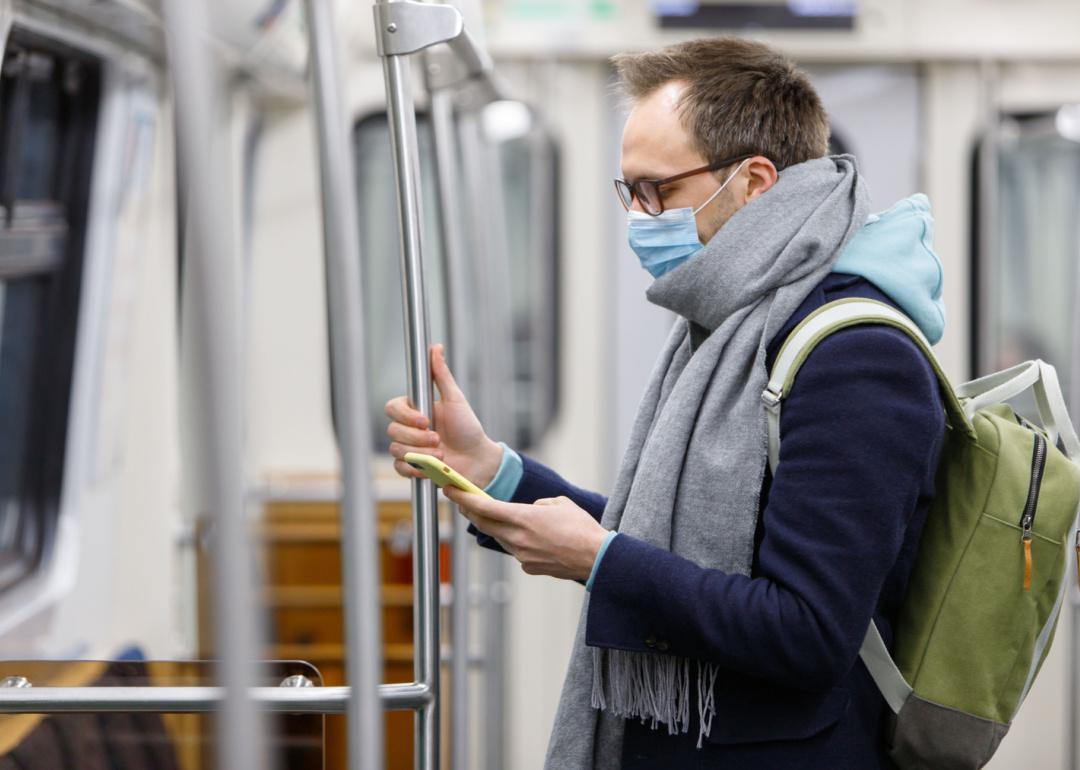
DimaBerlin // Shutterstock
#24. COVID-19 (tie)
– BBB risk index: 2.7
– Share of total scams reported: 0.8%
– Share of scams that reported a monetary loss: 14.8%
– Median reported loss: $400
There are two types of COVID-19-related scams. The first is when folks obtain financial and insurance information from individuals in exchange for (what should be free) tests and vaccinations. The other involves scammers capitalizing on the increase in online shopping, stealing money or banking information from individuals through peer-to-peer payment apps, like Venmo or CashApp, under the guise of accepted virtual payment options.
To protect yourself from these scams, never give personal information to unvetted agencies or over the phone, e-mail, or text. Additionally, never use P2P payment options when buying from an unknown vendor, stick to vetted checkout processes instead.

PeopleImages.com – Yuri A // Shutterstock
#24. Health care (including Medicaid and Medicare) (tie)
– BBB risk index: 2.7
– Share of total scams reported: 1.4%
– Share of scams that reported a monetary loss: 12.9%
– Median reported loss: $250
Health care scams come in many forms, but all involve someone either wanting your personal information for identity theft—under the guise of updating your insurance—or attempting to use your insurance to submit fraudulent medical charges. Most versions also include robocalls, texts, or emails from someone claiming to be a government official wanting your information.
Never share your personal information with someone who contacts you without your request. You should instead call a trusted number from your healthcare provider to verify the legitimacy of the request.
You may also like: 15 cars that depreciated the most last year

Eugenio Marongiu // Shutterstock
#23. Moving
– BBB risk index: 3.7
– Share of total scams reported: 0.9%
– Share of scams that reported a monetary loss: 76.0%
– Median reported loss: $90
Moving can be an incredibly stressful experience, and finding out you’ve been scammed can make it infinitely worse. The most popular scam includes getting a quote from a moving company and sending a deposit, only to have the movers never show up. Another scam includes companies quoting you a rate based on item weight and then, on moving day, informing you your belongings are much heavier than projected and that the price per additional pound will be double the original quote. Moving companies can also scam you by never delivering your items, meaning either your stuff is gone forever or you have to pay a hefty “ransom fee” to return your items.
The best ways to avoid these scams are heavily researching to ensure the company’s legitimacy, keeping an inventory of your belongings, getting everything in writing, and never sending a full payment in advance of the move.

fizkes // Shutterstock
#21. Family/friend emergency (tie)
– BBB risk index: 4.5
– Share of total scams reported: 0.4%
– Share of scams that reported a monetary loss: 26.1%
– Median reported loss: $800
Family/friend emergency scams prey on your love for your nearest and dearest and your willingness to do whatever it takes to ensure their safety and happiness. Scammers will contact you, claiming to be someone you know in a dire situation and need money. Scammers will also scour social media accounts learning minute details—like nicknames and travel plans—to legitimize their stories.
Resist the urge to act immediately and call your friend or family member directly. If you can’t reach them, speak to others who may know of their whereabouts. Double-checking these stories is the only surefire way to avoid this scam.
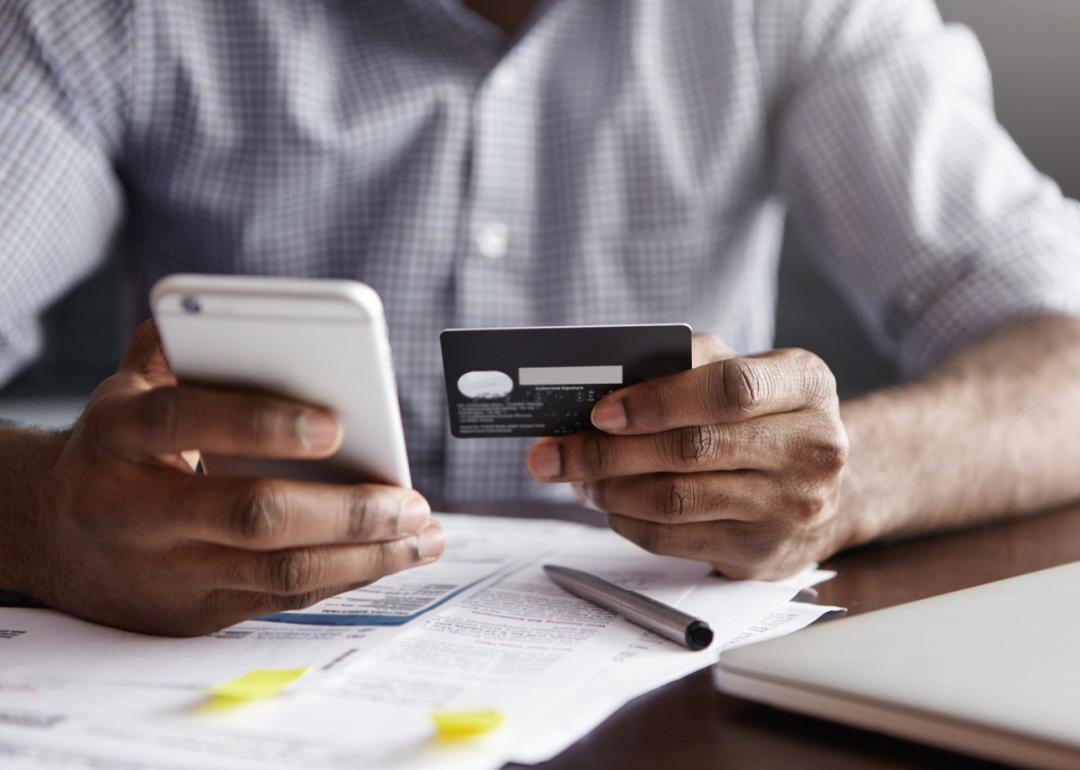
Cast Of Thousands // Shutterstock
#21. Utility (tie)
– BBB risk index: 4.5
– Share of total scams reported: 1.2%
– Share of scams that reported a monetary loss: 12.3%
– Median reported loss: $500
Utility scams are seasonal, often happening in the summer and winter when people depend on air conditioning or heat. Scammers pose as water, electric, or gas company representatives and contact you, threatening service deactivation if a certain fee or bill is not paid immediately.
As noted by the BBB, the biggest red flag for this scam is when a company requests you pay with a prepaid debit card or wire transfer. A legitimate utility company will always accept a check or credit card payment. Never allow a utility worker into your home unless you have a pre-scheduled appointment, and always call customer service to verify any requested payments.
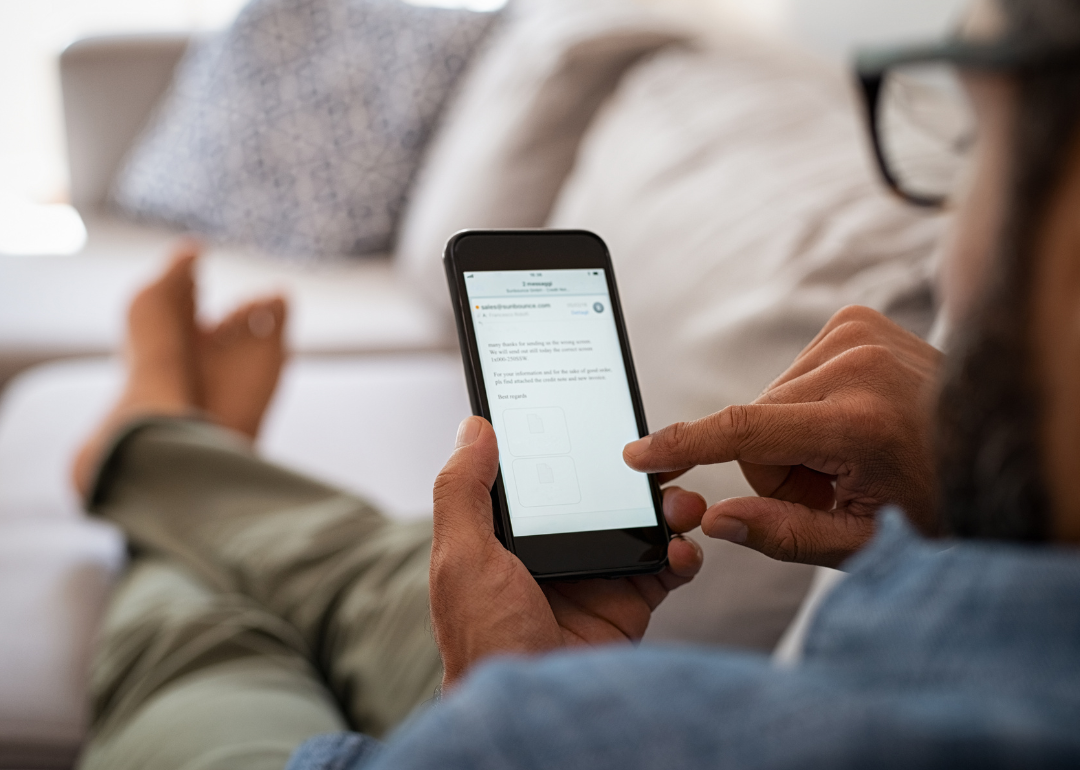
Canva
#20. Foreign money exchange
– BBB risk index: 5.1
– Share of total scams reported: 0.1%
– Share of scams that reported a monetary loss: 27.8%
– Median reported loss: $3,724
Foreign money exchange is a scam being phased out as most millennials are aware of it and on guard against it. The most popular version begins with a fake Nigerian prince or a wealthy businessman who will spin a sad story, over email, about how they have had to flee Nigeria but have left their money and valuables behind. The scammer pleads for your help to retrieve their belongings and money, and in return, promises to award you a few of their millions. What follows are the additional fees, bribes, taxes, and legal costs after the initial bank transfer you agreed to—all of which you will be asked to pay upfront.
The easiest ways to avoid this scam are by never sending money to a person you only know via email, being wary of strangers offering you large sums of money, and always being suspicious of transactions that involve additional and hidden fees.
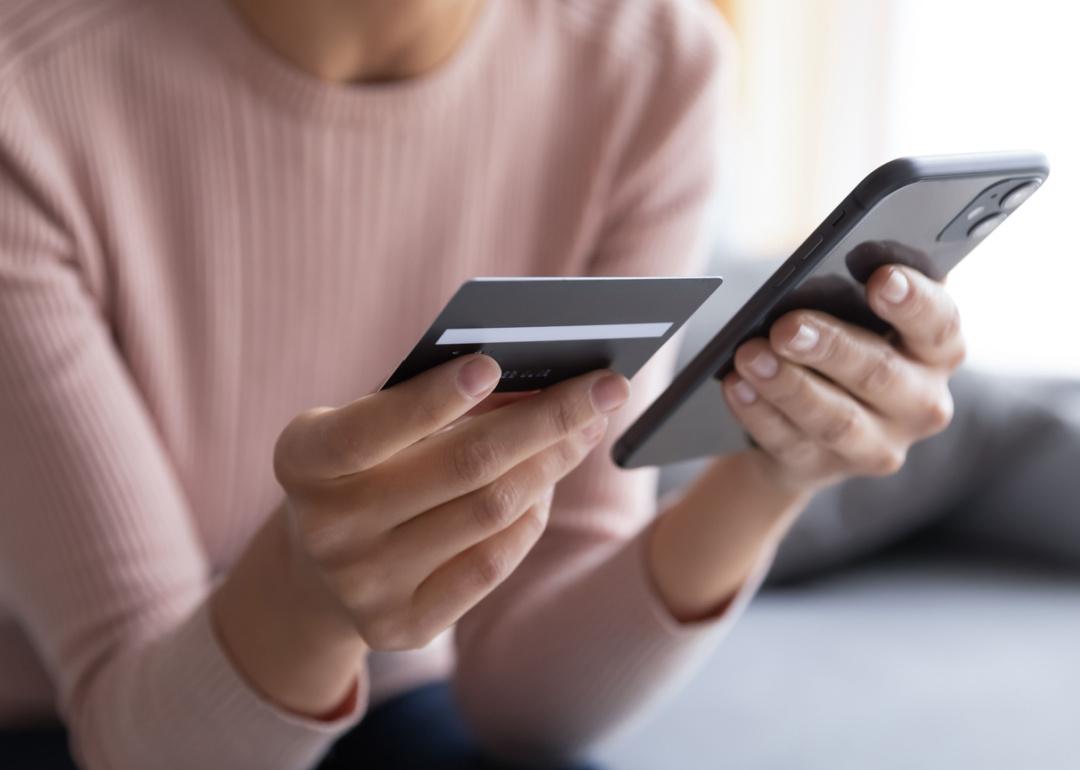
fizkes // Shutterstock
#19. Credit card
– BBB risk index: 5.6
– Share of total scams reported: 1.8%
– Share of scams that reported a monetary loss: 38.0%
– Median reported loss: $139
Credit card scams are very similar to identity theft scams and often share the same end goal: to make unauthorized transactions or steal your identity. Scammers will contact you, claiming to be your bank or credit card company, and ask you to verify your account information. Occasionally, the scam will be done over an email requesting you click a link to confirm your information, but instead, the link downloads malware to your device.
To entice you to give your information, these scammers often offer a better interest rate, inform you that they need to send you a new card as your old one has been compromised, or tell you that they need to verify a charge.
In order to avoid this, consider how your bank or credit card company usually contacts you and check directly with your bank or credit card company using a trusted customer service number to verify the request or offer.
You may also like: States where food stamps are used the most

Canva
#18. Debt collection
– BBB risk index: 6.1
– Share of total scams reported: 3.0%
– Share of scams that reported a monetary loss: 7.8%
– Median reported loss: $450
Scammers running debt-collection scams are particularly scary because of how persistent they can be. Scammers will call claiming to work for a debt collection agency or a government office and need to collect a debt you owe immediately. They may threaten you with consequences if you refuse—wage garnishment, arrest, court appearances, etc. If that fails, they will continue contacting you until you give in.
Stay on top of your debts and track what you owe and to whom. In the United States and Canada, debt collectors must notify you of your debt in writing—a “validation notice.” They are not legitimate if a company can’t or won’t provide this.

DenPhotos // Shutterstock
#17. Identity theft
– BBB risk index: 6.2
– Share of total scams reported: 1.9%
– Share of scams that reported a monetary loss: 19.8%
– Median reported loss: $283
In 2017 alone, 16.7 million individuals were impacted by identity theft, and more than $16.8 billion dollars were stolen. With the right information, scammers can steal and use your identity to open a line of credit in your name, take money out of your bank accounts, or obtain services that they never pay for—to name a few.
Identity theft can be hard to uncover, as scammers often go to great lengths to keep you unaware such as ensuring all bills and statements are sent to an alternative address. Make sure to regularly check your accounts for unexplained withdrawals and check your credit score often to ensure no unauthorized accounts have been opened in your name. You should also carefully guard your personal information—keeping all personal documents in a secure location and never giving out information to unsolicited callers.

Tero Vesalainen // Shutterstock
#16. Sweepstakes, lottery, and prizes
– BBB risk index: 7.2
– Share of total scams reported: 4.5%
– Share of scams that reported a monetary loss: 13.3%
– Median reported loss: $200
If you haven’t entered a contest, sweepstakes, or lottery, you are not eligible to win its prize. An email or phone call alerting you that you have won that prize and can collect it at any time after paying taxes and fees via a prepaid debit card or wire transfer is most definitely a scam. The same goes for a foreign lottery letter telling you you’ve won the jackpot. In the United States and Canada, citizens can’t enter foreign lotteries by phone or mail—meaning you would have had to visit the country to enter.
Keeping track of any contests, sweepstakes, or lotteries you do enter is the best way to avoid falling prey to this scam. Remember that a legitimate sweepstakes company will never ask you to pay upfront fees to claim a prize.
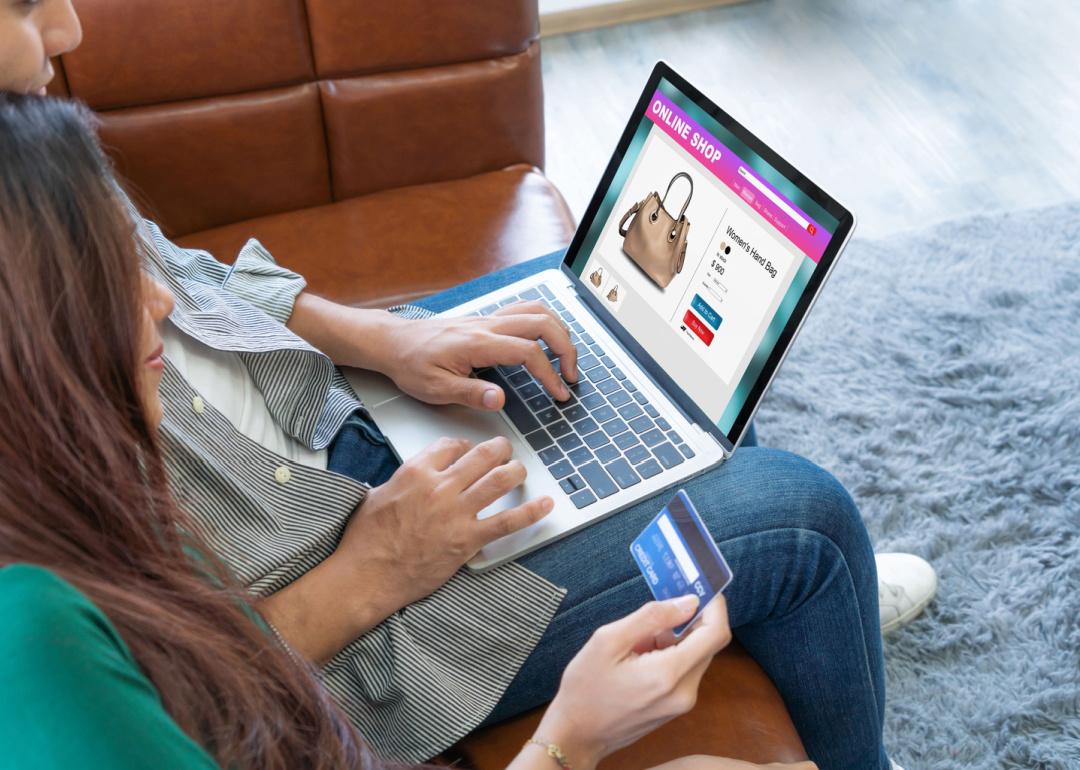
Blue Planet Studio // Shutterstock
#15. Counterfeit product
– BBB risk index: 12.3
– Share of total scams reported: 3.5%
– Share of scams that reported a monetary loss: 66.7%
– Median reported loss: $90
For a consumer who’s been lusting over a $1,300 handbag for months, finding the same bag on a different retailer’s website for only $700 may seem like a dream come true. The reality is often far from dreamy as this handbag hopeful probably just fell prey to a counterfeit product scam.
Counterfeit goods mimic designer goods right down to the trademarked logo but are made with inferior materials and workmanship and are sold online—sometimes through reputable sites, in flea markets, by street vendors, and in traditional retail stores for majorly reduced prices. Avoid sketchy retailers, choose to stick to the source or authorized sellers, and be wary of too-good-to-be-true prices.

WOVE LOVE // Shutterstock
#14. Romance
– BBB risk index: 12.5
– Share of total scams reported: 0.6%
– Share of scams that reported a monetary loss: 36.6%
– Median reported loss: $900
Romance scams have increased as online dating and social media apps make it easy to have an entire relationship with someone you’ve never met. The scams essentially all work the same way: Someone will make a fake online profile on a dating or social media site to connect with you, and after chatting and exchanging pictures, will offer some excuse as to why they cannot meet in person—they’re in the military, visiting family, working overseas, etc.
Once they sense an emotional connection, the scammer will make their move asking you for money perhaps to come and visit or for an emergency. After you’ve sent the money, they vanish from your life altogether, leaving behind the fake profile to strike again from a new one. Keep an eye out for red flags like the relationship moving more quickly than normal, excessive talk about trust, a refusal to meet you in person, too many “hard luck” stories, and language that doesn’t seem to match up with their claims.
You may also like: Iconic car debuts from the year you were born

mapo_japan // Shutterstock
#13. Rental
– BBB risk index: 13.4
– Share of total scams reported: 0.9%
– Share of scams that reported a monetary loss: 49.5%
– Median reported loss: $504
Especially for those in major cities where the rental market is tough, finding a new place to live can be difficult. In an effort to make the exhausting process easier, many skimp on their research and rush into agreements to have the taxing process over with. Scammers prey on these situations, luring you in with online ads of beautiful listings at low prices before telling you that time is short, others are interested, and immediate action is required to secure the listing.
After paying a hefty security deposit, the first and last month’s rent, and an agent’s fee, you discover the property is unavailable and maybe never even existed. ApartmentList reported that 43.1% of renters have encountered a fraudulent listing, and 5.2 million renters have lost money because of rental scams. Be wary of rentals that seem too good to be true and insist on seeing the listing in person before sending any money.

Canva
#12. Credit repair/debt relief
– BBB risk index: 14
– Share of total scams reported: 1.2%
– Share of scams that reported a monetary loss: 32.7%
– Median reported loss: $600
Scammers will contact you promising a specific credit score or a reduction or total elimination of your debt as long as you pay an upfront fee. You pay the fee, and nothing changes except that you are now out money that you could have put towards the debt you owe. Never believe in guarantees and always avoid advance fees. In the United States, credit repair and debt relief companies can only collect money after performing the promised services.

NicoElNino // Shutterstock
#11. Phishing
– BBB risk index: 17.6
– Share of total scams reported: 11.9%
– Share of scams that reported a monetary loss: 9.30%
– Median reported loss: $270
Phishing scams can be the hardest to identify as they come in such a wide variety of forms. The most common are emails either claiming you have won a prize and need to claim it or owe something and threatening consequences if unpaid. Sometimes these emails include a PDF, either linked or as an attachment, which downloads malware to your computer and steals your personal information.
Keep yourself safe by never opening anything from an unrecognized email address and being wary of emails that contain only the most general information—your name is excluded from the email, or the last four digits are absent from the credit card on which they are claiming payment is due.
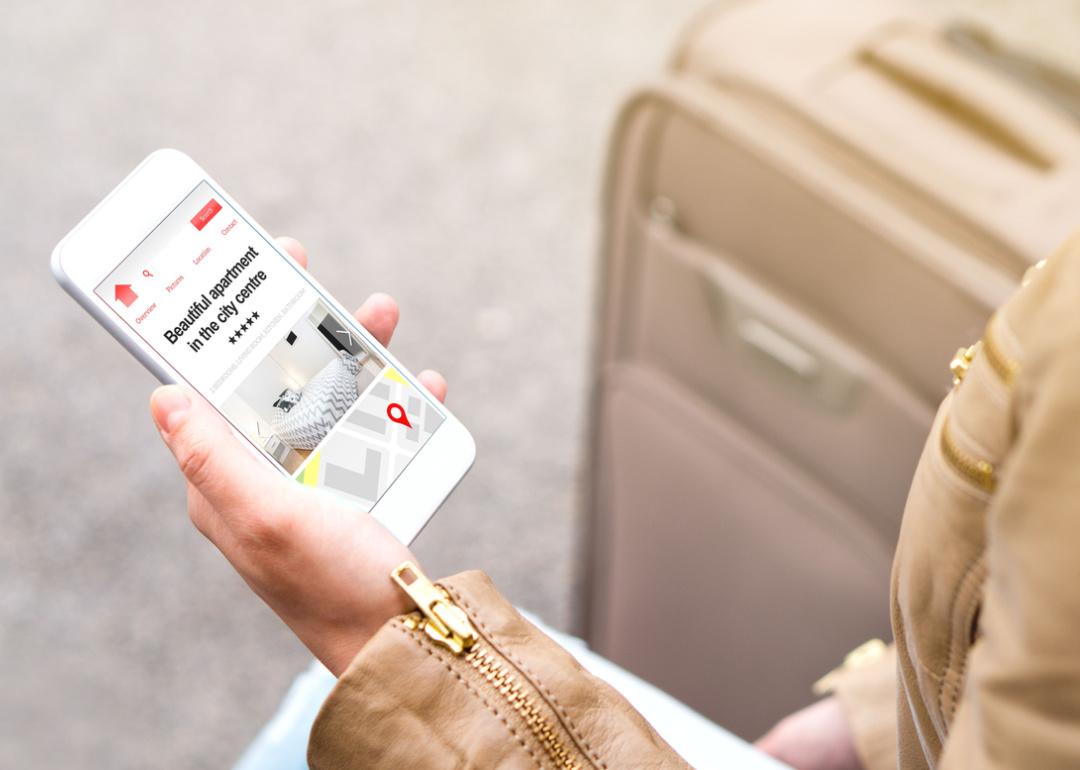
Tero Vesalainen // Shutterstock
#10. Travel and vacation
– BBB risk index: 20.3
– Share of total scams reported: 0.9%
– Share of scams that reported a monetary loss: 56.5%
– Median reported loss: $700
One of the most common travel and vacation scams is similar to a rental scam. A con artist will post a listing for a vacation rental that either doesn’t exist or doesn’t look as pictured, pressure you into acting quickly, and then ask you to submit a deposit before vanishing into the night with your money (and the beach house of your dreams).
Another common version preys on those looking to sell their timeshares. A real estate broker or agent, who claims to specialize in timeshare resales, will call claiming to have dozens of potential buyers, and offer to expedite the selling process if only you’ll pay a small upfront fee. Talk to the owner of the vacation home you’re looking to rent, check public records and online reviews to make sure the location matches the description, and never pay any kind of upfront fees via prepaid debit cards or wire transfers.

Pheelings media // Shutterstock
#9. Tech support
– BBB risk index: 22
– Share of total scams reported: 3.1%
– Share of scams that reported a monetary loss: 24.3%
– Median reported loss: $500
For many of us, there would be nothing worse than losing all of the data on our computers or having them rendered useless by viruses. Those running tech support scams know this and have invented clever ways to steal your money by preying on this fear. Posing as tech support staff from well-known computer companies—Dell, Norton, or Microsoft—scammers will call informing you that your computer is infected, or a pop-up will appear alerting you that something is wrong and giving you a number to call.
When you call, the scammer will offer to fix the problem if you pay a fee. They may even ask for remote access to fix the problem and then install malware to steal your personal information. Never grant access to your computer, know that legitimate tech companies would not call out of the blue, and shut down your computer when a suspicious pop-up appears.
You may also like: 50 most popular chain restaurants in America

Ground Picture // Shutterstock
#8. Government grant
– BBB risk index: 24.8
– Share of total scams reported: 2.2%
– Share of scams that reported a monetary loss: 19.5%
– Median reported loss: $1,000
The government is not in the business of offering free money to random people “just because.” Getting a government grant is a long, involved process and is only initiated when you take the first step. Anyone reaching out to you telling you otherwise—perhaps with claims that you have been awarded a grant you won’t have to repay as long as you pay a few small upfront fees—may be trying to pull a government grant scam over on you.
There are hundreds of fake “look-alike” agencies out there, so always double-check any grant agency contacting you against the only official list of all U.S. federal grant-making agencies.

fizkes // Shutterstock
#7. Advance fee loan
– BBB risk index: 25.9
– Share of total scams reported: 1.8%
– Share of scams that reported a monetary loss: 40.6%
– Median reported loss: $609
Many scams prey on financially unstable people, and advance fee loan scams are no exception. In this scam, a loan broker will promise you a substantial loan, regardless of your credit history or score, after you pay an upfront fee or “insurance.” Of course, as soon as you do, the loan broker and all the money you promised are gone.
While various fees are associated with loans, they are always communicated clearly and taken from the money you are being loaned. Real lenders will never guarantee a loan before checking your credit history and will never accept strange fee payment forms like gift cards, prepaid debit cards, or wire transfers.

Pheelings media // Shutterstock
#6. Fake check/money order
– BBB risk index: 27.1
– Share of total scams reported: 2.1%
– Share of scams that reported a monetary loss: 14.8%
– Median reported loss: $1,475
Fake check and money order scams can be hard to peg down as con artists use various stories and situations to steal your money. Often you will receive a check worth far more than what was expected. A scammer will then ask you to deposit the check and wire back the difference saving them the trouble of canceling that check and sending over another. Forged checks often take weeks to be uncovered, and by the time the check bounces, the extra money you thought you had, plus the difference you wired back to the scammer, will be gone.
Always be aware of overpayments, especially gross overpayments. If you receive a much larger check than you were expecting, send it back; otherwise, you may be on the hook for funds used against the amount.

wutzkohphoto // Shutterstock
#5. Investment
– BBB risk index: 29.9
– Share of total scams reported: 0.8%
– Share of scams that reported a monetary loss: 56.9%
– Median reported loss: $1,100
Con artists put a lot of effort into their scams to make them convincing; investment scams are the best example. In the most basic version of this scam, you’ll be convinced to invest in a project, company, or loan, but when you try to withdraw your money, find what you invested in never really existed. Another common investment scam is a Ponzi scheme; think Bernie Madoff’s Bernard L. Madoff Investment Securities.
Educate yourself about investments and industry regulations before getting involved with a project, and keep your eyes peeled for too-good-to-be-true buzzwords.

Dusan Petkovic // Shutterstock
#4. Home improvement
– BBB risk index: 45.2
– Share of total scams reported: 1.4%
– Share of scams that reported a monetary loss: 59.1%
– Median reported loss: $955
One of the few in-person scams on this list is the home improvement scam, which starts with a knock on your door and a contractor offering services at a below-average price, often claiming they’re finishing another project in the neighborhood and can squeeze you in if you act now. They will then either ask for a deposit and walk away with it, find dozens of “additional issues” after they’ve begun work that you’ll need to pay for, or coax you into signing away your insurance payment.
Always check a contractor’s references and reviews before allowing them to start work, be wary of huge upfront costs and high-pressure deals, insist on having a written contract before work begins, and ask to see a contractor’s business license, permits, and other official documents validating their legitimacy.
You may also like: Marijuana violations are taking truck drivers off the road, adding more supply chain disruptions

PaeGAG // Shutterstock
#3. Employment
– BBB risk index: 63
– Share of total scams reported: 7.8%
– Share of scams that reported a monetary loss: 15.1%
– Median reported loss: $900
Employment scams happen when con artists pose as legitimate companies recruiting or hiring. After receiving your application, they’ll hire you almost immediately, usually without a proper interview, and request your banking information to set you up for a direct deposit or charge you for training.
Keep in mind that some jobs—those without special training, licensing, or educational requirements like secret shoppers and customer service reps—are more susceptible to this scam than others. Be aware of any out-of-the-ordinary hiring procedures, like being offered a job without an interview.

Prostock-studio // Shutterstock
#2. Cryptocurrency
– BBB risk index: 90.6
– Share of total scams reported: 1.9%
– Share of scams that reported a monetary loss: 66.2%
– Median reported loss: $1,200
The average person doesn’t have a solid understanding of what, exactly, cryptocurrency is or how it works, which makes it easy for scammers to prey on them. According to the FTC, cryptocurrency scams run the gamut from folks impersonating romantic interests and established businesses who demand payment in cryptocurrency to so-called investment managers promising to grow your wealth at an unbelievable rate.
Keep an eye out for investment managers or businesses who reach out to you unprompted, returns that seem too good to be true, and investment opportunities that don’t include details or explanations.
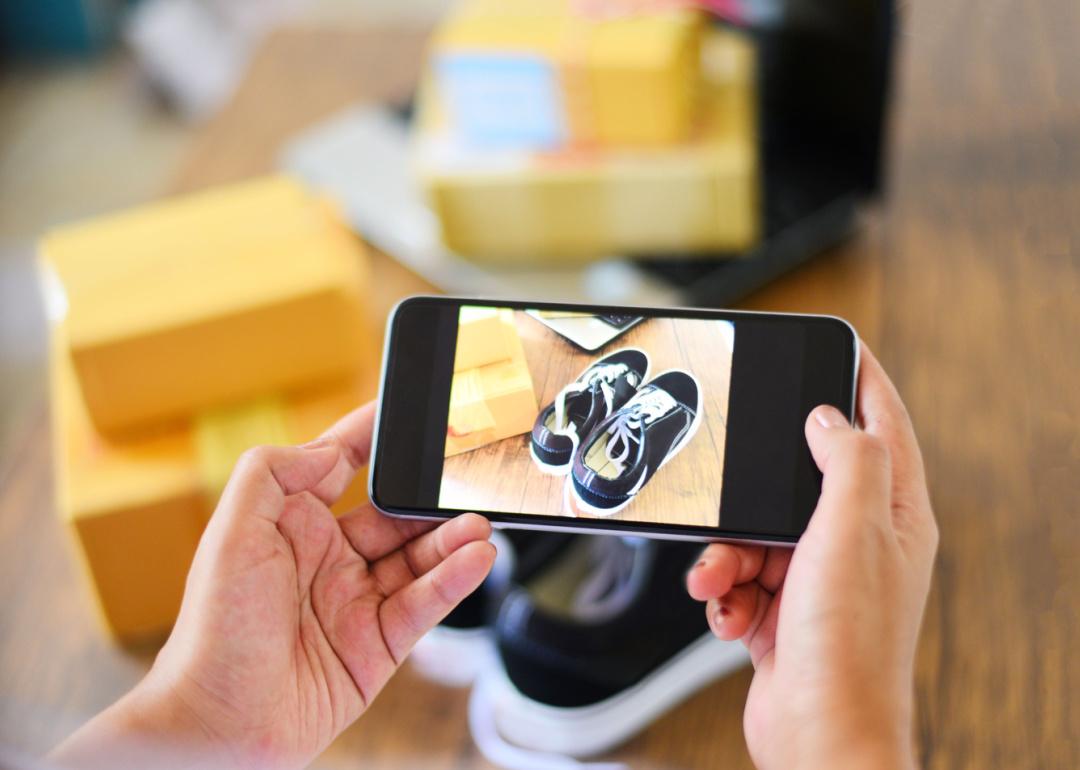
Bigc Studio // Shutterstock
#1. Online purchase
– BBB risk index: 167.4
– Share of total scams reported: 37.4%
– Share of scams that reported a monetary loss: 74.9%
– Median reported loss: $101
Online purchase scams often happen on direct seller-to-buyer sites like eBay and Craigslist. If you’re the seller in this scam, you might agree to sell your item outside the site’s routine checkout process and opt to receive payment by cashier’s check or money order only to have the buyer run a fake check/money order scam.
If you’re the buyer, you’ll purchase an item or service only to never receive what was ordered and paid for. To keep yourself secure, only use websites and online marketplaces that offer protection to buyers and sellers, and never agree to exchanges outside the usual checkout process.
Founded in 2017, Stacker combines data analysis with rich editorial context, drawing on authoritative sources and subject matter experts to drive storytelling.
You may like
Business
5 tech advancements sports venues have added since your last event
Published
7 hours agoon
April 19, 2024
In today’s digital climate, consuming sports has never been easier. Thanks to a plethora of streaming sites, alternative broadcasts, and advancements to home entertainment systems, the average fan has myriad options to watch and learn about their favorite teams at the touch of a button—all without ever having to leave the couch.
As a result, more and more sports venues have committed to improving and modernizing their facilities and fan experiences to compete with at-home audiences. Consider using mobile ticketing and parking passes, self-service kiosks for entry and ordering food, enhanced video boards, and jumbotrons that supply data analytics and high-definition replays. These innovations and upgrades are meant to draw more revenue and attract various sponsored partners. They also deliver unique and convenient in-person experiences that rival and outmatch traditional ways of enjoying games.
In Los Angeles, the Rams and Chargers’ SoFi Stadium has become the gold standard for football venues. It’s an architectural wonder with closer views, enhanced hospitality, and a translucent roof that cools the stadium’s internal temperature.
The Texas Rangers’ ballpark, Globe Life Field, added field-level suites and lounges that resemble the look and feel of a sports bar. Meanwhile, the Los Angeles Clippers are building a new arena (in addition to retail space, team offices, and an outdoor public plaza) that will seat 18,000 people and feature a fan section called The Wall, which will regulate attire and rooting interest.
It’s no longer acceptable to operate with old-school facilities and technology. Just look at Commanders Field (formerly FedExField), home of the Washington Commanders, which has faced criticism for its faulty barriers, leaking ceilings, poor food options, and long lines. Understandably, the team has been attempting to find a new location to build a state-of-the-art stadium and keep up with the demand for high-end amenities.
As more organizations audit their stadiums and arenas and keep up with technological innovations, Uniqode compiled a list of the latest tech advancements to coax—and keep—fans inside venues.
![]()
Jeff Gritchen/MediaNews Group/Orange County Register // Getty Images
Just Walk Out technology
After successfully installing its first cashierless grocery store in 2020, Amazon has continued to put its tracking technology into practice.
In 2023, the Seahawks incorporated Just Walk Out technology at various merchandise stores throughout Lumen Field, allowing fans to purchase items with a swipe and scan of their palms.
The radio-frequency identification system, which involves overhead cameras and computer vision, is a substitute for cashiers and eliminates long lines.
RFID is now found in a handful of stadiums and arenas nationwide. These stores have already curbed checkout wait times, eliminated theft, and freed up workers to assist shoppers, according to Jon Jenkins, vice president of Just Walk Out tech.
Billie Weiss/Boston Red Sox // Getty Images
Self-serve kiosks
In the same vein as Amazon’s self-scanning technology, self-serve kiosks have become a more integrated part of professional stadiums and arenas over the last few years. Some of these function as top-tier vending machines with canned beers and nonalcoholic drinks, shuffling lines quicker with virtual bartenders capable of spinning cocktails and mixed drinks.
The kiosks extend past beverages, as many college and professional venues have started using them to scan printed and digital tickets for more efficient entrance. It’s an effort to cut down lines and limit the more tedious aspects of in-person attendance, and it’s led various competing kiosk brands to provide their specific conveniences.
Kyle Rivas // Getty Images
Mobile ordering
Is there anything worse than navigating the concourse for food and alcohol and subsequently missing a go-ahead home run, clutch double play, or diving catch?
Within the last few years, more stadiums have eliminated those worries thanks to contactless mobile ordering. Fans can select food and drink items online on their phones to be delivered right to their seats. Nearly half of consumers said mobile app ordering would influence them to make more restaurant purchases, according to a 2020 study at PYMNTS. Another study showed a 22% increase in order size.
Many venues, including Yankee Stadium, have taken notice and now offer personalized deliveries in certain sections and established mobile order pick-up zones throughout the ballpark.
Darrian Traynor // Getty Images
QR codes at seats
Need to remember a player’s name? Want to look up an opponent’s statistics at halftime? The team at Digital Seat Media has you covered.
Thus far, the company has added seat tags to more than 50 venues—including two NFL stadiums—with QR codes to promote more engagement with the product on the field. After scanning the code, fans can access augmented reality features, look up rosters and scores, participate in sponsorship integrations, and answer fan polls on the mobile platform.
Boris Streubel/Getty Images for DFL // Getty Images
Real-time data analytics and generative AI
As more venues look to reinvigorate the in-stadium experience, some have started using generative artificial intelligence and real-time data analytics. Though not used widely yet, generative AI tools can create new content—text, imagery, or music—in conjunction with the game, providing updates, instant replays, and location-based dining suggestions
Last year, the Masters golf tournament even began including AI score projections in its mobile app. Real-time data is streamlining various stadium pitfalls, allowing operation managers to monitor staffing issues at busy food spots, adjust parking flows, and alert custodians to dirty or damaged bathrooms. The data also helps with security measures. Open up an app at a venue like the Honda Center in Anaheim, California, and report safety issues or belligerent fans to help better target disruptions and preserve an enjoyable experience.
Story editing by Nicole Caldwell. Copy editing by Paris Close. Photo selection by Lacy Kerrick.
This story originally appeared on Uniqode and was produced and
distributed in partnership with Stacker Studio.
Founded in 2017, Stacker combines data analysis with rich editorial context, drawing on authoritative sources and subject matter experts to drive storytelling.
Business
Import costs in these industries are keeping prices high
Published
1 week agoon
April 11, 2024
Inflation has cooled substantially, but Americans are still feeling the strain of sky-high prices. Consumers have to spend more on the same products, from the grocery store to the gas pump, than ever before.
Increased import costs are part of the problem. The U.S. is the largest goods importer in the world, bringing in $3.2 trillion in 2022. Import costs rose dramatically in 2021 and 2022 due to shipping constraints, world events, and other supply chain interruptions and cost pressures. At the June 2022 peak, import costs for all commodities were up 18.6% compared to January 2020.
While import costs have since fallen most months—helping to lower inflation—they remain nearly 12% above what they were in 2020. And beginning in 2024, import costs began to rise again, with January seeing the highest one-month increase since March 2022.
Machinery Partner used Bureau of Labor Statistics data to identify the soaring import costs that have translated to higher costs for Americans. Imports in a few industries have had an outsized impact, helping drive some of the overall spikes. Crop production, primary metal manufacturing, petroleum and coal product manufacturing, and oil and gas extraction were the worst offenders, with costs for each industry remaining at least 20% above 2020.
![]()

Machinery Partner
Imports related to crops, oil, and metals are keeping costs up
At the mid-2022 peak, import costs related to oil, gas, petroleum, and coal products had the highest increases, doubling their pre-pandemic costs. Oil prices went up globally as leaders anticipated supply disruptions from the conflict in Ukraine. The U.S. and other allied countries put limits on Russian revenues from oil sales through a price cap of oil, gas, and coal from the country, which was enacted in 2022.
This activity around the world’s second-largest oil producer pushed prices up throughout the market and intensified fluctuations in crude oil prices. Previously, the U.S. had imported hundreds of thousands of oil barrels from Russia per day, making the country a leading source of U.S. oil. In turn, the ban affected costs in the U.S. beyond what occurred in the global economy.
Americans felt this at the pump—with gasoline prices surging 60% for consumers year-over-year in June 2022 and remaining elevated to this day—but also throughout the economy, as the entire supply chain has dealt with higher gas, oil, and coal prices.
Some of the pressure from petroleum and oil has shifted to new industries: crop production and primary metal manufacturing. In each of these sectors, import costs in January were up about 40% from 2020.
Primary metal manufacturing experienced record import price growth in 2021, which continued into early 2022. The subsequent monthly and yearly drops have not been substantial enough to bring costs down to pre-COVID levels. Bureau of Labor Statistics reporting shows that increasing alumina and aluminum production prices had the most significant influence on primary metal import prices. Aluminum is widely used in consumer products, from cars and parts to canned beverages, which in turn inflated rapidly.
Aluminum was in short supply in early 2022 after high energy costs—i.e., gas—led to production cuts in Europe, driving aluminum prices to a 13-year high. The U.S. also imposes tariffs on aluminum imports, which were implemented in 2018 to cut down on overcapacity and promote U.S. aluminum production. Suppliers, including Canada, Mexico, and European Union countries, have exemptions, but the tax still adds cost to imports.
U.S. agricultural imports have expanded in recent decades, with most products coming from Canada, Mexico, the EU, and South America. Common agricultural imports include fruits and vegetables—especially those that are tropical or out-of-season—as well as nuts, coffee, spices, and beverages. Turmoil with Russia was again a large contributor to cost increases in agricultural trade, alongside extreme weather events and disruptions in the supply chain. Americans felt these price hikes directly at the grocery store.
The U.S. imports significantly more than it exports, and added costs to those imports are felt far beyond its ports. If import prices continue to rise, overall inflation would likely follow, pushing already high prices even further for American consumers.
Story editing by Shannon Luders-Manuel. Copy editing by Kristen Wegrzyn.
This story originally appeared on Machinery Partner and was produced and
distributed in partnership with Stacker Studio.
Founded in 2017, Stacker combines data analysis with rich editorial context, drawing on authoritative sources and subject matter experts to drive storytelling.
Business
The states where people pay the most in car insurance premiums
Published
2 weeks agoon
April 4, 2024
Nearly every state requires drivers to carry car insurance, but the laws vary, and many factors affect the cost of coverage.
Some are controllable, at least to degrees: the type of car you have and your credit history. Some are not: your age and gender. Your marital status, place of residence, and claims history are among the other variables that go into it.
Across the United States, premiums are soaring, rising 20% year over year and increasing six times faster than consumer prices overall as of December 2023, CBS reported. Last September, CNN noted that car insurance rates jumped more in the previous year than they had since 1976.
CBS pointed to many potential reasons for these increases in prices. Coronavirus pandemic-era issues have made buying, fixing, and replacing vehicles costlier. Extreme weather events caused by climate change also damage more vehicles, while insurance companies are increasing their business costs. Severe and more frequent crashes are to blame as well, CNN reported.
On top of these, local factors such as population density, the number of uninsured drivers, and the frequency of insurance claims all affect premiums, which can lead motorists to change or switch their coverage, use other modes of transportation, or even alter decisions about when to buy a vehicle or what to look for.
To see how geography affects cost, Cheap Insurance mapped the states where people pay the most in car insurance premiums using MarketWatch data. Premium estimates were based on full-coverage car insurance for a 35-year-old driver with good credit and a clean driving record. Data accurate as of February 2024.
![]()
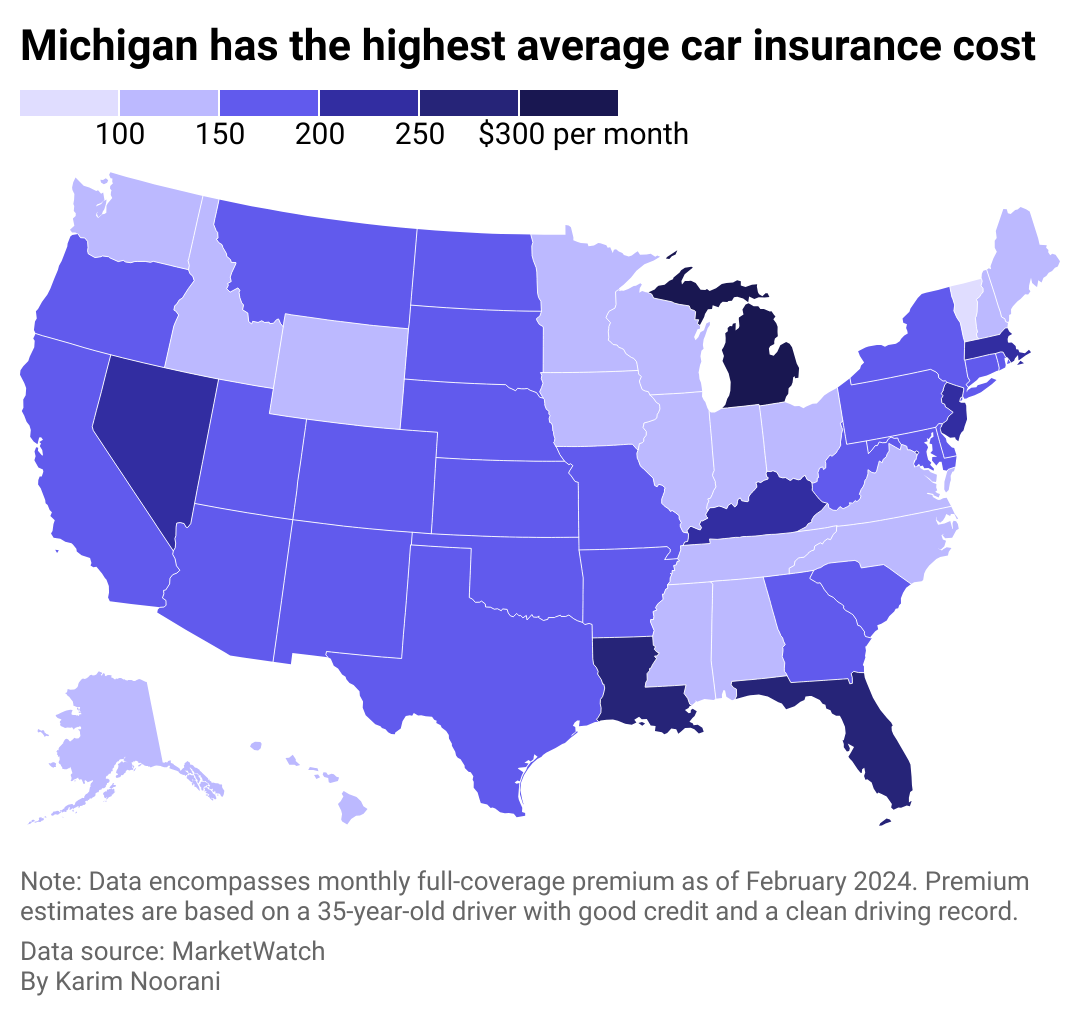
Cheap Insurance
Americans pay $167 per month on average for full-coverage insurance
There are common denominators among the five states where it’s most expensive to have car insurance: Michigan, Florida, Louisiana, Nevada, and Kentucky. Washington D.C. is another pricey locale, ranking #4 overall.
Three of these six are no-fault jurisdictions and require additional coverage beyond coverage to pay for medical costs. Michigan notably calls for $250,000 in personal injury protection (though people with Medicaid and Medicare may qualify for lower limits), $1 million in personal property insurance for damage done by your car in Michigan, and residual bodily injury and property damage liability that starts at $250,000 for a person harmed in an accident.
Other commonalities between these states include high urban population densities. At least 9 in 10 people in Nevada, Florida, and Washington D.C. live in cities and urban areas, which leads to more crashes and thefts and high rates of uninsured drivers and lawsuits. Additionally, Louisiana, Florida, and Kentucky rank #5, #8, and #10, respectively, in motor vehicle crash deaths per 100 million vehicle miles traveled in 2021 based on Department of Transportation data analyzed by the Insurance Institute for Highway Safety.

Canva
#5. Kentucky
– Monthly full-coverage insurance: $210
– Monthly liability insurance: $57

Canva
#4. Nevada
– Monthly full-coverage insurance: $232
– Monthly liability insurance: $107

Canva
#3. Louisiana
– Monthly full-coverage insurance: $253
– Monthly liability insurance: $77

Canva
#2. Florida
– Monthly full-coverage insurance: $270
– Monthly liability insurance: $115

Canva
#1. Michigan
– Monthly full-coverage insurance: $304
– Monthly liability insurance: $113
Story editing by Carren Jao. Copy editing by Paris Close. Photo selection by Lacy Kerrick.
This story originally appeared on Cheap Insurance and was produced and
distributed in partnership with Stacker Studio.
Founded in 2017, Stacker combines data analysis with rich editorial context, drawing on authoritative sources and subject matter experts to drive storytelling.
Featured
-

 Business4 months ago
Business4 months agomesh conference goes deep on AI, with experts focusing in on training, ethics, and risk
-

 Business4 months ago
Business4 months agoSkill-based hiring is the answer to labour shortages, BCG report finds
-

 Events6 months ago
Events6 months agoTop 5 tech and digital transformation events to wrap up 2023
-

 People4 months ago
People4 months agoHow connected technologies trim rework and boost worker safety in hands-on industries
-

 Events3 months ago
Events3 months agoThe Northern Lights Technology & Innovation Forum comes to Calgary next month






